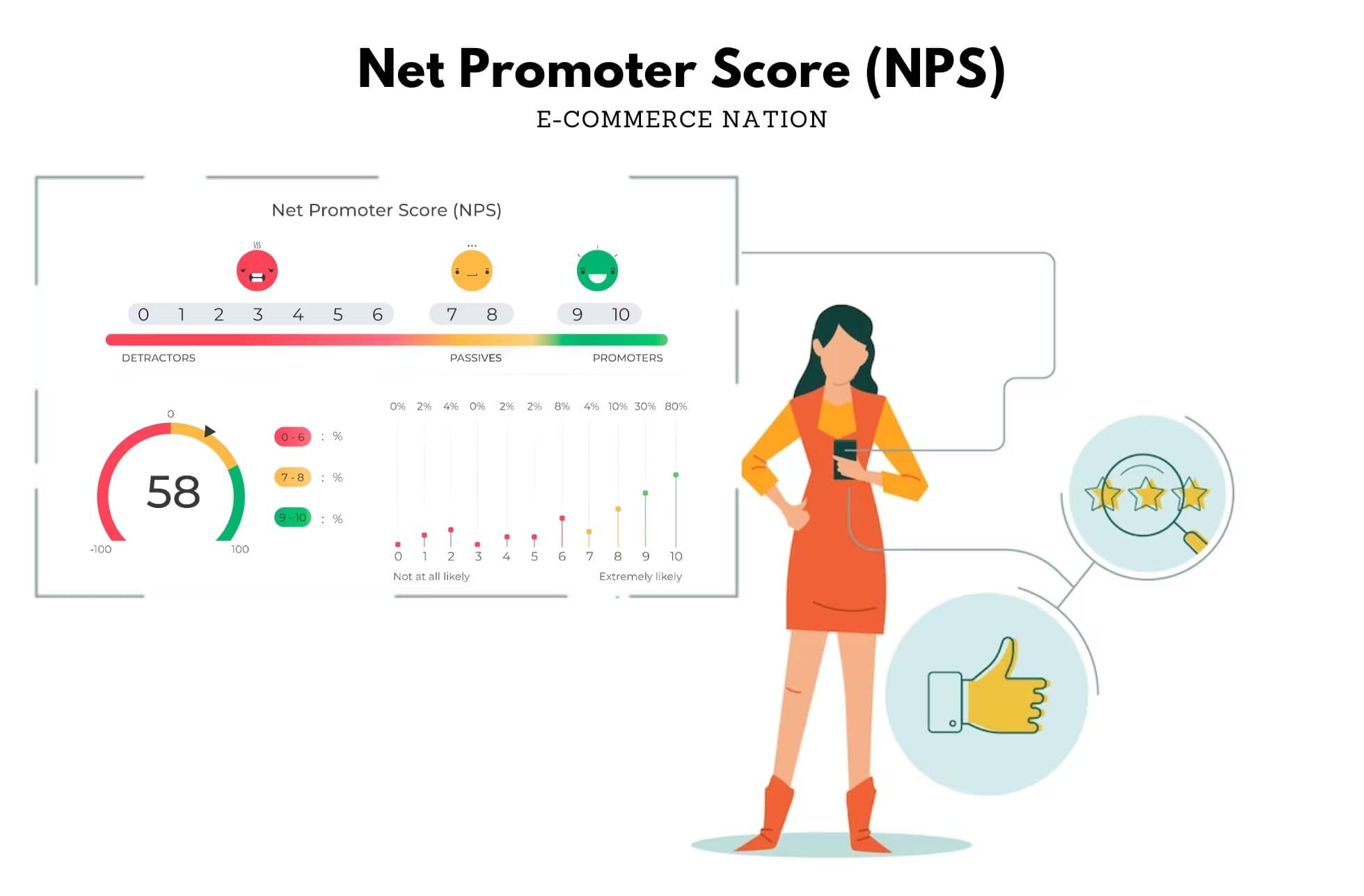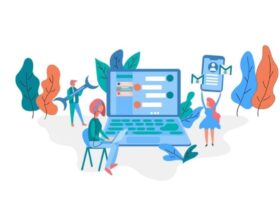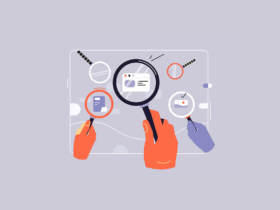Looking back on the last five years, digital requirements for B2C companies have expanded tenfold. The conversion from pen and paper bureaucracy and door to door sales have been quickly overtaken by the digital desires of consumers and user experience. While this is hardly breaking news for anyone living in the 21st Century, it remains to be said that digital is not enough. The focus now is not about tearing businesses away from their treasured writing desks and teaching them to type. Instead, it is to encourage the intelligent use of digital tools, bespoke to their needs.
As creators and users of new technologies, our attention should now hone in on user experience. And not just that of the consumer, but also that of the operator. It is the overreaching argument in this article, that focusing on the UX of the operator in customer care technologies will inevitably also improve the experience of the consumer. How is this possible? How can a consumer benefit from customer care software that they will never see?
The answer here lies firmly in the realms of efficiency, accuracy, and practicality. They represent the key components in creating the ideal user experience for both operator and consumer.
Channel availability
On a surface level, customer service is about connecting your business with the customers who have questions. What might, however, look like a simple line between operator and customer is much more of an extended network. It’s like a complex spider’s web made up of several different contact channels spread across traditional (Telephony & email) and new (Twitter, Facebook, Trustpilot) technologies.
The first concern for businesses establishing a more intelligent customer care operation should lie with accessibility. It is not sufficient to be available on one or two communication channels, even less so if these channels are based on old faithful models like telephony and email. Even if you decide not to provide contact channels across all traditional and modern communication lines, the accessibility to these channels should be clear and straight forward. Embedding signposts for your contact channels on every page of your brand’s website will ensure two things:
-
Customer awareness: user experience analysis
How many times have your customers expressed frustration at the inaccessibility of your contact channels? Do they have to sign up five, six, seven times to reach a living, breathing operator? How many vague lists are they obligated to endure before pressing # to be connected to an operator? Transparency on where you and your customers can intersect to discuss any issues arising is a key part of easing user experience.
-
Channel Preference
Your customers will have channel preferences, but these preferences are generally based on the last method they successfully used to resolve an issue. For many customers, they might prefer telephony over email as they find that first contact resolution is more tangible when discussing a problem viva voce. Of course, there’s a slither of truth in this, but it must be said that telephony services are often time-consuming, expensive and difficult to staff.
If you wish to move your customers towards another channel, highlighting this channel as a quick and effective platform for problem resolution is the best way to arrange an alternative meeting place between your operators and your customers. It’s about telling your customers where they will receive the quickest response. Just as being honest with them about long hold times on other channels. Customers will be attracted to the fastest response channel – whichever channel you decide that to be.
Connected conversations and user experience analysis
Availability across multiple contact channels doesn’t come without its complications. Activity on several platforms often means that customers will skip between mediums. This can create two problems for your UX.
The first is concerned with wasted resource when a customer is discussing the same issue in two concurrent conversations across two different channels. The second is about visibility. This is where operators are blind to previous conversations which might better inform the service they provide to a customer. Have they had this issue before? Is this their first time contacting your brand?
By connecting your channels together via a common thread of dynamic data fields like the customer’s email address, full name or order number can help you to keep track of your customers’ history with your brand. When a customer connects with your brand and shares an email address as a form of identification, previous conversations wherein the same email address has been shared can be called in to join the new conversation. With this method, operators can decide to focus the conversation on one channel if two are occurring concurrently. They can even better inform themselves of the customer’s previous journeys with their brand to tailor their service.
The aim of every contact center is to provide the best service possible, so the processes of connecting conversations aren’t new. What can be improved, however, is the automation of this process. Like that, the operator does not need to search several databases. Automating the gathering of customer data within your customer service platform will see the end of switching from one customer service platform to another to find relevant information.
This ease of access to information will inevitably increase productivity within your contact center, and reduce costs associated with the additional labor required for less sophisticated operating systems.
Skill sets
With this said, labor cannot be replaced with software. Even the most intelligent of platforms cannot, for the foreseeable future, investigate nuances or empathize with humans in the way that every brand should. In partnership with connecting customer profiles, businesses should also assure that these profiles are assigned to the right people, at the right time.
Queues are hardly innovative approaches in customer care technology. Grouping queries together by channel or by query type is a function which has helped contact centers designate work to different teams for many years. However, where can we improve the queue function via automation in order to lessen the manual labor required to assign work from queues to the right people?
Within any contact center, there can be several different skill sets employed for the resolution of different queries. For example, with new or training staff, centers might wish to assign more run of the mill, simple and straight forward requests to build competencies in certain skill sets before further development.
Functions like keyword streams, wherein your customer care platform picks up on certain words within the customer’s message, can help in assigning the right conversations to the right people. For example, for a brand which is based heavily on logistics, the center might prefer that training team members be assigned queries relating to parcel location to facilitate teaching methods on query resolution.
Keyword streams can be used for any number of assignation problems within a contact center – it certainly doesn’t end with the assignation of problem types. For example, they can also be used for language detection services if your center functions in across several multilingual channels. Inputting simple key terms like ‘Hola’, ‘yo’ or ‘quiero’ will ensure that Spanish speaking customers are directed towards Spanish speaking operators – preventing a hot potato situation wherein unmanageable conversations are passed from one operator to another until it lands upon the appropriate skill set.
Historically, customer care platforms have favored, perhaps through necessity, the manual assignation of conversations between brand and customer. Manually assigning each conversation can, however, be time-consuming – meaning that customers are waiting longer than necessary to receive a response to their queries. Removing the limitations of manual assignation and trusting in the automatic assignation of work to trusted people in your customer care teams can ensure that even the customers can leave with a positive impression on the efficiency of problem resolution within your brand.
Practicality and UX Design
What is perhaps less common is the ability for the technology to make intelligent decisions for your user experience based on certain criteria such as language, keyword streams or geographical location – without human intervention.
Keyword streams are an important aspect of any thriving customer contact center. It allows any question to which the FAQ section of your brand’s website might have an answer to receive an immediate response via the use of bots. Straightforward and common questions like tracking or order update requests can then be answered via the chatbot.
An immediate response from an intelligent chatbot with the capacity to pull links to 3rd party carriers or provide specific updates on an order’s progression significantly speeds up the customer’s journey. Not only is the information provided objective and succinct, but also very cost effective and time beneficial.
Of course, not every query in user experience can be resolved by such practical means. Without a doubt, more than a few customer requests will need the extra human touch from advisors. By removing ownership of such simple queries from your advisors however, more time is set aside to concentrate on more complex queries. While queues can play a massive role in transforming your customer’s journey towards a chatbot, they can also be used to make sure that your customers are directed towards the correct advisor should the chatbot not be sufficient in resolving a given issue.
What is important here is that happy customers are not always born from the speed of the response, but also its contents. Has the advisor been empathetic enough? Is action being taken to ensure that a customer’s circumstances are taken into consideration? Has the advisor, at the very least, provided all the information necessary in order to fulfill the first-time resolution?
Canned responses per advisor are commonplace. Whether each advisor creates their own version, or there is a company-wide solution for repeated responses, there’s always a way to better streamline the user experience for your customer service operators.
The ideal customer care software will allow your contact center to prepare, construct and edit content responses in the system. It permits the center to create sets of responses, with variations to prevent robotic repetitions of the same information. In this sense, perhaps lengthy but concrete processes, like important information on returns or legal jargon for disclaimer processes can be pre-prepared and integrated into your customer care software. Not only does this cut valuable minutes from your operators’ response time, but it also serves as a resolution for the continual repetition of the same ideas for multiple customers.
Approaching your customer quickly is important, but the focus must always be on answering their questions – less a speedy response create several follow up questions, each tallying up the time spent to resolve the customer’s case. Effective and efficient content responses, built into the system for accessibility no matter where or when you’re using them, will make sure that the answers given to customers include everything needed to satisfy the customer’s request.
Conclusion: UX, what to Focus on?
User experience is not all about the customer. If the focus shifts from the customer to the person providing a service to the customer, the facility of use, speed and shortcuts can help to leave a good impression on visitors to your website. Self-service opinions have their place in this new wave of consumer convenience, however, retailers would be mistaken in assuming that self-service will one-day reign over a good, old fashioned helping hand. It is therefore important now to consider not how we can continue to replace people with technology, but how technology can make more efficient and more impressive the service provided by real people.
For years now, consumer technology specialists have been pushing digital transformation. This move from paper, phone calls, and emails now somewhat accomplished, we should now turn our attention to better digital services. Moving from pens and paper to computers is not enough – digital platforms are not sufficient enough in providing the best possible care to your customers – it’s about appropriating existing digital capacities to best serve the operators that use them. The appropriation of your digital tools will always be best constructed when you consult your own operators and address their difficult, lengthy and time-consuming processes. Being digital is not enough – it’s about what you do with it.
Image credit : Serj Marco




